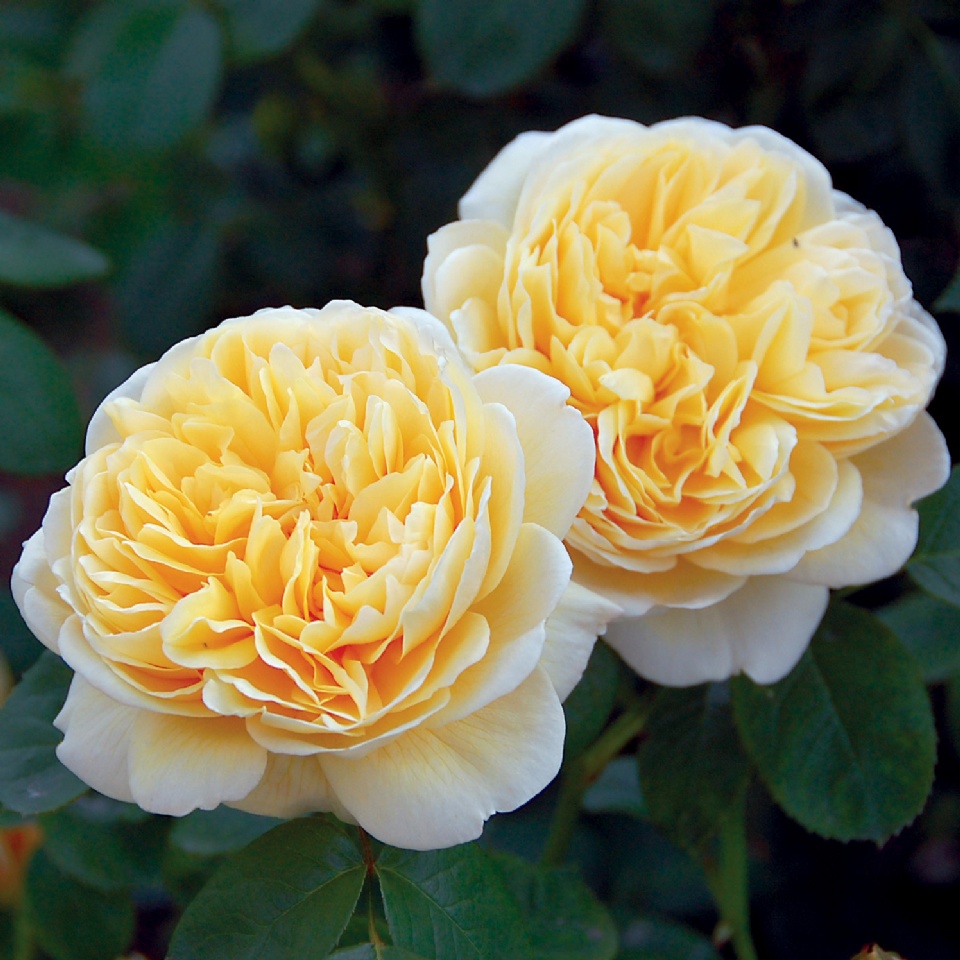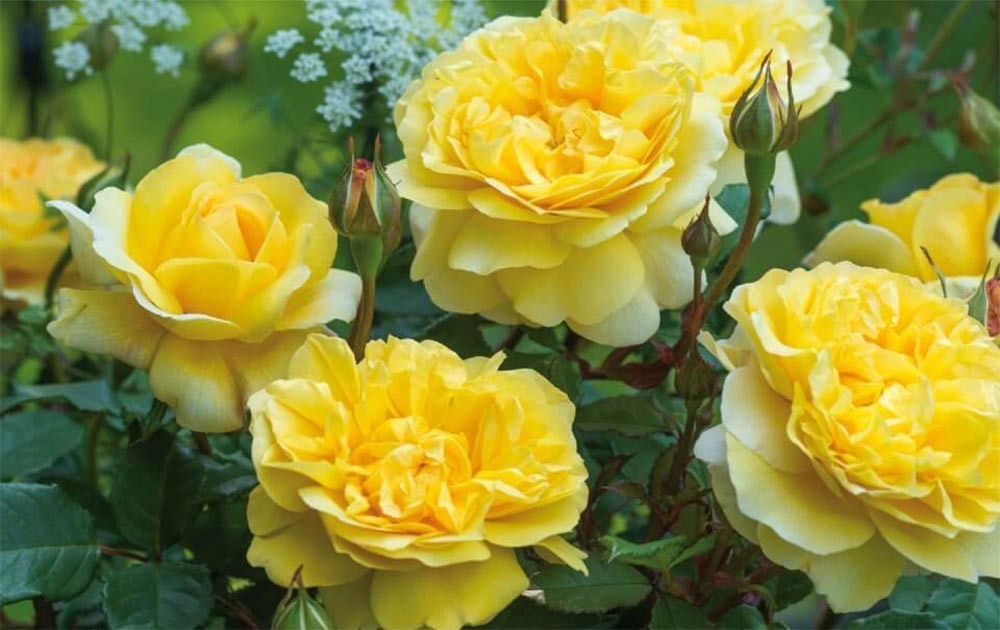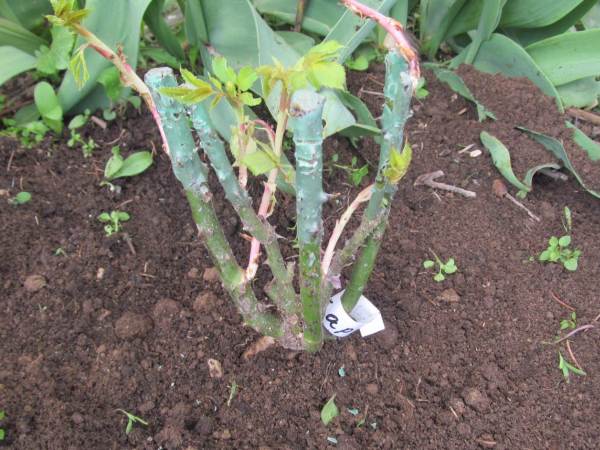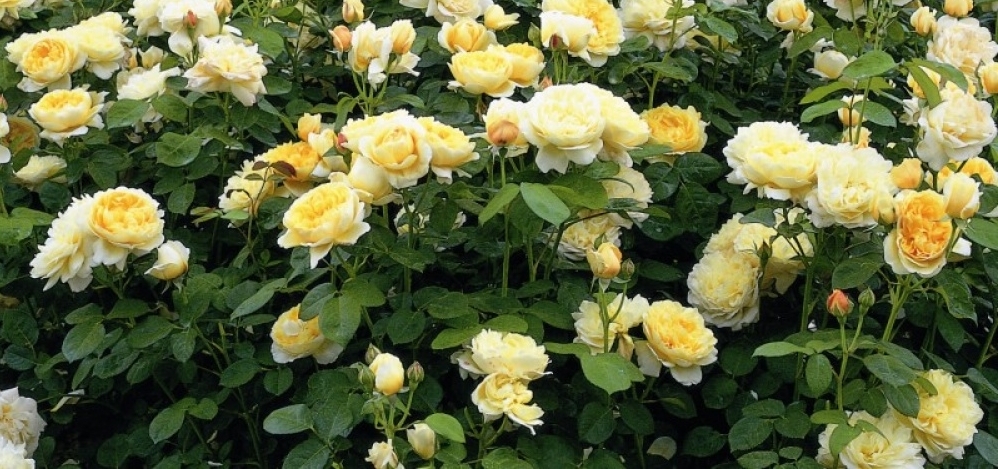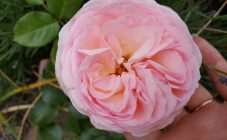Content:
Rose Charlotte is one of Austin's best frost-resistant varieties. This garden flower can be successfully grown even in the latitudes of the city of St. Petersburg. Rose Charlotte (also called Lady Charlotte's rose) is one of the magnificent English yellow roses.
General information about Austin roses
David Austin's English roses are incomparable with others. Beauty and skillful form make you fall in love with them at first sight.
A distinctive feature of Austin roses are unusually beautiful large wide buds with a pleasant aroma.
They are resistant to diseases and growing conditions that are not favorable for them. For flowering, 4-5 hours of sun per day is enough for them. They bloom several times, their flowering can even continue continuously.
David Austin, when creating a variety, focused on the outline of the rose. English roses have special beautiful glass shapes: rosette, pom-shaped, cupped. A strong pleasant scent is another striking feature of David Austin roses. Among more than 200 varieties, it is impossible to find a single one that would not have a scent.
Leander and Charles Austin are some of the best, unique, large-bud varieties. They differ in that they bloom very slowly and in the half-open state are a bit like hybrid tea roses. The petals of these roses are rigid and strict in shape.
Austin's peony roses of red varieties: Otello and Dark Lady are also unusually beautiful.
For home cultivation in pots or containers, the best Austin rose varieties are Christopher Marlowe and Sophy's Rose (Sophie Rose).
Rose Olivia Rose Austin (Olivia Rose Austin) - one of the newest varieties of David Austin. The flower has regular-shaped bushes and beautiful large buds, has a fruity smell.
The history of the creation of the Charlotte variety
Charlotte rose is a type of English rose grown by David Ostin. This variety was created by Austin in 1993 and introduced in 1994. The registered name for this rose is "AUSpoly".
It was obtained by crossing varieties such as Chaucer and Conrad Ferdinand Meyer and Graham Thomas pollen. Austin's Charlotte rose bears great resemblance to its progenitor - Graham Thomas, but, at the same time, it has its own characteristics in the form of a lighter color of buds, good winter hardiness and endurance.
Description and features of the Charlotte variety
Rose buds are dense, double, with a diameter of 8 to 11 millimeters. They have up to 100 petals in a slightly wavy shape that changes as the bud opens.
At first, they have a rounded-pointed bud, and when the flower blooms, a deep-cup-shaped (hemispherical) shape.
The opened buds are honey-yellow in color. After the flower has fully blossomed, the outer petals acquire a pale yellow hue and become less saturated. The buds bloom one at a time or consist of small clusters of 3 to 5 buds. The rose exudes a slightly sweet and fragrant, pleasant aroma.
English rose bush Charlotte consists of erect branches with good strength. It is also branchy and compact. Its height ranges from 90 to 185 cm, width reaches from 120 to 150 cm.If the plant is planted in a warm region, then its height can reach up to 2 meters. The leaves are glossy, dark green.
Flowering lasts the entire summer period. The flower pleases with the most lush bouquets from June to July. The plant blooms less abundantly from mid-July to early autumn. With its aromas, the flower attracts bees, which are engaged in pollination.
This rose has a frost resistance down to -26.1 ° C according to USDA data. Therefore, in central Russia, before the winter period, the flower must be covered with spruce branches, juniper branches, dry oak leaves.
Before the onset of the first frost, the base of the flower is hilled by 25-30 centimeters. When the temperature drops below 10 degrees, a warm canopy is made over the bush from warm material and spruce branches.
Features of growing and principles of care
The seedling for planting must have at least three healthy shoots. It should also have a developed root with flexible and white roots on the cut. Before planting a rose seedling, it is placed in water for 4 or 5 hours, adding a growth stimulator. This procedure allows all the roots to straighten out and be saturated with water. Subsequently, this contributes to the plant's good habituation to new conditions and the rapid growth of shoots.
You need to plant a flower in a fertilized and dug, well-moistened soil.
The pit is made 40 or 50 centimeters deep and at least 60 cm in diameter. Then a mixture is made, with which a rose seedling will be sprinkled. It consists of:
- 1 part: sand, peat, humus;
- 2 parts of fertile soil;
- 300 grams of fertilizer specially developed for roses;
- 1 cup wood ash
In the pit, for planting a seedling, a small hill is made from the ground in the center. The roots are straightened in a circle and sprinkled with the prepared mixture.
Around the seedling, the soil is compacted and well moistened with water. In order to retain moisture and prevent overheating of the root system, the soil surface is necessarily mulched.
For good growth, the variety needs the necessary amount of water and nutrition. Once a week, the bush is watered with warm water per 1 bush - 1 bucket of water.
It is necessary to water the plant little by little, at the base. You cannot pour water over the bush. In hot weather, watering is done in the evening and more often. Evening spraying with water is also useful for the plant in very hot weather.
It is necessary to shake the rose bushes after a heavy and long rain to rid the delicate petals of the buds of water. If this is not done, then stagnant water can cause flowers to rot.
In the first year, you do not need to feed the plant, since it is quite enough for one growing season of nutrients that were laid in the hole during planting.
Pruning is very important for the Charlotte rose. If it is not carried out, the flower will begin to ache and may die. The plant is pruned three times a year: in spring, summer and autumn. Spring pruning is done in April, until the buds open. The shoots are made half shorter.If you need to grow a tall bush, then cut the shoots by a third.
In summer pruning, shoots that have wilted along with part of the stem are cut, as well as herbaceous shoots. Also, there is a removal of diseased shoots or with the presence of pests on them. Summer pruning stimulates rose bloom. When carrying out autumn pruning, it is otherwise called sanitary, shoots that have not ripened are cut out, leaves are removed. Other stems are shortened by 20-30 cm.
Reproduction of a rose is carried out by planting cuttings. From a semi-lignified shoot, which begins to bloom, cuttings are made 10-12 centimeters long. Then they are placed on the garden bed, deepening, but not entirely - leaving part of the cutting on the surface. To ensure a favorable environment, the shoots are placed on top of a cap made of transparent material.
After three winters under cover, the cuttings are planted.
Advantages and disadvantages of the variety in comparison with other varieties
The variety has a lot of advantages. It is unpretentious, has high vitality and resistance to bad weather and diseases. The flower has fragrant buds that have not yet blossomed, similar to pompons. It blooms several times during the season.
Among the disadvantages of the Charlotte rose, one can single out the rapid shedding of flowers and their fading from the sun's rays. They can also be susceptible to black spot and powdery mildew.
The splendor of this variety lies in the dense double buds that bloom profusely on the bush. A cut bouquet lasts a long time and will delight you with its beauty and wonderful aroma, like a tea rose. This tempts many amateur gardeners to cultivate this crop in their area.
